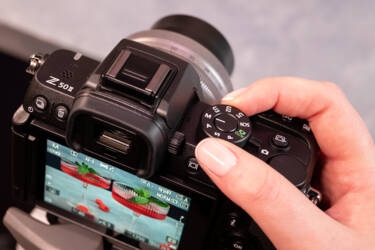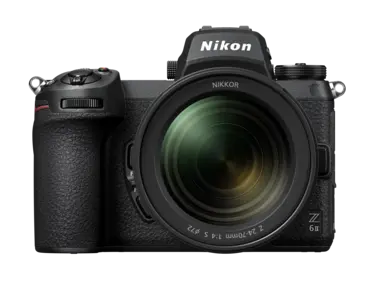Demystifying the dial: 5 Nikon camera modes to know

From auto to manual, here’s how to choose what’s right for you
Everyone goes through that moment of confusion when they get their first real camera and look at the mode dial. If that’s you, don’t worry. Here we’ll explain exactly what each camera mode is and what to use it for.
What are camera modes, exactly?
Camera modes are pre-set functions that let your camera take photos with certain settings already dialled in so you don’t have to worry about them – except Manual mode, which enables you to change all the settings yourself, but we’ll get to that.
Beginners will often use Auto, Shutter Priority or Aperture Priority, but pros will also use these modes too depending on their style and how they work. Which one you use depends on what you’re photographing.
Your Nikon camera has five main modes, as well as a number of user customisable modes. The main modes are:
- Auto
- Programmed Auto
- Shutter Priority
- Aperture Priority
- Manual
Let’s look at each one in detail, starting with the easiest: Auto.

The Nikon Z50II set to Auto mode
Auto mode
Auto is the low-stress mode. It automatically changes the camera’s settings (exposure, shutter speed and ISO) according to the environment so you can focus on the photo.
Beginners can use Auto to focus on their framing and composition technique and get used to how it physically feels to use their camera without sweating the details. Most people eventually move up from here because their goal is to learn how gain more control over the camera settings, right up to Manual mode.
A perceived drawback of Auto is a lack of creative control with your exposure, with rather ‘flat’ results from the even exposure across the frame. However, new Nikon technology using deep learning AI means Auto is getting better all the time.
Programmed Auto mode
This mode, the ‘P’ on your mode dial, takes over shutter speed and aperture but lets you control the ISO. It’s one of the first steps in mastering the exposure triangle for people who want to work in full Manual.
In a nutshell, the ISO setting controls how sensitive your camera’s sensor is to light. Working in P mode lets you see how changing your ISO affects your image’s exposure in real time. You get a feel for managing it, lowering it in bright light and raising it in shadow, for example.
Read more: What is ISO?

The same scene, different camera modes: Auto, Programmed Auto (P), Aperture Priority (A) and Shutter Priority (S)
Shutter Priority mode
Usually the ‘S’ on your mode dial. Shutter Priority mode gives you control of the camera’s shutter speed while the camera controls your aperture.
Set the camera to Auto ISO and you can see, based on the shutter speed you choose, how the three settings work together. For example, your camera may choose a wider aperture when you select a high shutter speed to let more light in. You can also set the ISO manually, giving you more control.
You’ll also learn how shutter speed works to freeze action with faster-moving objects requiring higher speeds. Once you grasp how shutter speed impacts your image, you can experiment with slower speeds and creative motion blur.
Read more: What is shutter speed?
Aperture Priority mode
This mode is the same idea as Shutter Priority, but you control the aperture setting instead while the camera sets the shutter speed. It’s the ‘A’ on your mode dial. Again, you can choose either Auto ISO or choose the ISO manually.
Your aperture setting, also called the f-number or f-stop, controls how much light gets through your camera’s lens. Playing with this mode lets you learn how to use your other exposure settings to compensate for your aperture, and how aperture affects depth of field.
Wider apertures blur the background and narrower ones increase the sharpness of your image. Try taking several photos of the same subject with different aperture settings to see how your depth of field changes.
Read more: What is aperture?

The same scene, different settings: Manual mode gives you full control
Manual mode
The ‘M’ on your mode dial, Manual mode gives the photographer full control of the camera’s settings. Shutter speed, aperture and ISO can all be separately adjusted. In Manual mode, as in the others, you can either choose a specific ISO or Auto ISO.
While working in Manual mode doesn’t automatically make you an amazing photographer, it does provide much more creative control over exposure than the other modes listed here. You can control both exposure and depth of field. You can crank up to a high shutter speed and make sure the ISO is boosted to compensate.
To get the most out of it, you should understand how your exposure settings interact when using Manual mode. If you don’t understand that raising your shutter speed cuts down light, for example, you won’t know to open the aperture or boost the ISO to compensate, and you’ll get a dark image.
It’s often recommended to progress through the other modes before using Manual to understand the exposure triangle, but it isn’t necessary. You can choose to do that, or you can start in Manual and tackle it head-on. It all depends on how you learn, so experiment to see what clicks.
For a complete rundown of your Nikon camera’s mode dial, check out the official online manual.
More in Camera 101s
Better photography starts here

Unlock greater creativity








